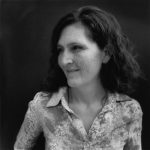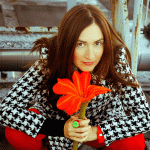Con Edison Immigrant Artist Program Newsletter, Issue No. 45
Featured Artist: Ioan Florea
NYFA first encountered Transylvanian born artist Ioan Florea after his immediate and empathetic response to Hurricane Sandy six months ago. Founder of C.A.S. Paints, Ioan donated more than more than 1,200 tubes and containers of paints, gels, and sample sets to NYFA for artists impacted by the storm. Hundreds of artists benefited from his generous contribution. IAP and NYFA Program Associate Michon Ashmore interviewed Ioan to find out more about his artistic practice, his business and his experience as an immigrant artist.
Tell us about your work. What are your motivations and what is the focus of your upcoming solo exhibition this Fall?
Growing up in a utopic Communist society and immigrating to the USA, a different utopic society, I have been part of revolution and witnessed financial collapse, and have also gone through a long legal immigration process of changing and redefining my identity. During my childhood in the Communist regime back in Transylvania, I spent most of the time exploring the surrounding forest and the hills full of earth pigments, clay and kaolin.
The Communist government had control over everything, from what you think to what you eat. It was illegal to slaughter your own animals for consumption, but people did it anyway, hiding the animal bones in the forest. That is how I started finding animal bones in the nearby woods. I was very intrigued by the interesting shapes of the vertebrae and I started to collect them, turning them into toys and carving and drawing on their surfaces. Also, my father used to be a radiologist and I spent time studying and being fascinated by his X-ray images.
My recent work is influenced by my personal experience with the lengthy legal immigration process. It addresses globalization and human migration in search for utopian spaces and the consequences that come with that. My upcoming show atSurplus Gallery will focus on my new paintings that integrate and explore different new pigments and lightweight materials inspired by the world of nanotechnology. I developed my own custom 3D image fused resin and pigment transfer on canvas, and I also use liquid metal paint that I formulate. My paintings have a double function, addressing both the visual and tactile senses. I’ll also have some sculptural floor pieces based on Constantin Brancusi’s “Silent Table,” for which I will be using recycled 55 gallon drums as chairs with 3D shapes attached.
I am also integrating text in my new work. I remember slogans used by Communists that were displayed on huge billboards all over. One of them was “No meal without fish.” People who complained because the government was altering the salami by adding soya used the slogan “We do not want any more soya salami.” As we know, fish is good for you but the Communists were promoting it because it was cheap. Soya is also good, but it was added to the salami for economic reasons, not because it was healthy. I explore these kinds of contradictions from my past with new ones from a consumerist society.
You run a successful business, C.A.S. Paints, as well as being an artist with an active exhibition schedule. How do you manage your art/work balance and have you changed your approach over time?
The business is based on a post-Fordism model and is the rational side that keeps me anchored in reality. It is an active process. Every single day I am learning something new that I apply to my artwork. I see some businesses use creative techniques to come up with new and interesting products, the same way artists should use business techniques to come up with new, meaningful art. From a psychological point of view, the goal is both for art and business to unleash the creative energies. I have the chance to explore and experiment with new materials and technologies and it’s like learning new languages that open new horizons. In the past few years a lot of things have changed, and in my vision the definition of a contemporary artist is someone who breaks the boundaries between art, science, technology, philosophy and architecture and resurfaces them in a new language. In both my art and research I use conceptual blending theory.
Also, I would say that are many similarities between running a business and an art studio. I think back in the Renaissance the artist was more a businessman than an artist. Today we can see the same pattern where the artist has to create and promote his work and image like a product. It is not enough to create. Marketing is a major part of being an artist.
You became an American Citizen in 2009. Can you speak to the challenges and opportunities of transitioning from one culture to another? Having gone through this experience, do you have any advice for recent immigrant artists to the U.S. as they establish their careers?
I became an American citizen in 2009 during the Lincoln Bicentennial in Springfield, IL, in a special Naturalization Ceremony in the Old State Capitol State Historic Site. Becoming an American citizen is a responsibility. As an artist and a new American citizen, I had the chance to give back, share and help artists who lost their studios and materials to Hurricane Sandy through NYFA and other organizations. I also recently donated Alkydpro paints to senior students affected by the fire at Pratt Institute Fine Arts Department to meet the deadline for their graduation exhibition “Flameproof.”
One of the biggest challenges involved in transitioning from one culture to another is redefining your identity. As an artist I think you become universal by incorporating your own national identity with the new American identity. There are many challenges – material ones, like going through the expensive immigration process while you keep making art; and emotional challenges, especially if you have elderly parents back in your home country. The toughest one is when they get sick and you’re not able to go visit them every day.
My advice to recent immigrant artists to the U.S. who try to establish their careers is to use every opportunity to volunteer in any way in order to assimilate and absorb the new culture. They should be open to any kind of creative experience and find ways to be involved. New York offers tremendous possibilities, from hundreds of galleries to the art fairs and museums.
How can our artists stay connected with you, and hear about opportunities in the future?
Artists can contact me at [email protected]. I’ll also post future opportunities on NYFA’s website.





